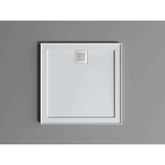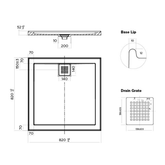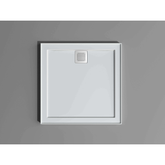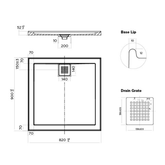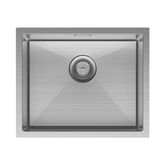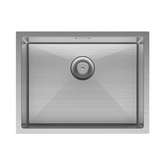Need to know - Difference between P Trap and S Trap
When it comes to bathroom plumbing, understanding the differences between P-traps and S-traps is essential for both functionality and compliance with Australian standards. These components play a crucial role in preventing sewer gases from entering your living spaces, ensuring a hygienic and odour-free environment.
What Are Plumbing Traps?
Plumbing traps are curved sections of pipe installed beneath fixtures like sinks, basins, and toilets. Their primary function is to retain a small amount of water, creating a seal that blocks sewer gases from rising into the home. This water barrier is vital for maintaining indoor air quality and preventing unpleasant odours.
The P-Trap
The P-trap is a U-shaped pipe with a horizontal extension that connects to the drainage system in the wall. This design is prevalent in modern plumbing due to its efficiency and compliance with current building codes.
Key Features of P-Traps:
-
Design: The P-trap consists of a curved "U" section with a horizontal arm that connects to the wall drain.
-
Functionality: The water held in the bend prevents sewer gases from escaping into the home.
-
Ventilation: Proper venting is essential to maintain the water seal and prevent siphoning.
The S-Trap
The S-trap resembles the P-trap but extends vertically, connecting directly to the floor drain. While common in older homes, S-traps are now generally discouraged or prohibited in new constructions due to potential issues.
Key Features of S-Traps:
-
Design: The S-trap has a similar "U" shape but continues downward into the floor.
-
Functionality: Like the P-trap, it holds water to block sewer gases.
-
Ventilation Issues: S-traps are prone to siphoning, which can deplete the water seal and allow gases to escape.
Comparison Table: P-Trap vs. S-Trap
| Feature | P-Trap | S-Trap |
|---|---|---|
| Design | U-shaped with a horizontal outlet to the wall drain. | U-shaped with a vertical outlet to the floor drain. |
| Installation | Connects to the drainage system in the wall. | Connects directly to the floor drainage system. |
| Ventilation | Requires proper venting to prevent siphoning. | More prone to siphoning due to vertical design; often lacks proper venting. |
| Code Compliance | Compliant with modern Australian plumbing standards. | Generally non-compliant with current codes due to siphoning risks. |
| Common Usage | Standard in new constructions and renovations. | Found in older homes; not recommended for new installations. |
Why Are S-Traps Discouraged?
The primary concern with S-traps is their tendency to siphon, which can empty the water seal and permit sewer gases to enter the living space. This siphoning occurs because the vertical design can create a vacuum effect during drainage, pulling water out of the trap. Due to these issues, S-traps are generally not compliant with modern Australian plumbing standards.
Converting an S-Trap to a P-Trap
If your home currently has S-traps, it's advisable to consult with a licensed plumber to assess the possibility of converting them to P-traps. This conversion typically involves rerouting the drainage pipes to connect to the wall rather than the floor and ensuring proper venting to maintain the water seal.
Practical Advice for Homeowners
-
Regular Maintenance: Periodically check under sinks and fixtures to ensure traps are in good condition and free from leaks.
-
Professional Consultation: Engage a licensed plumber to inspect your plumbing system, especially if your home is older and may contain outdated components like S-traps.
-
Stay Informed: Familiarise yourself with local plumbing codes and standards to ensure your home's plumbing system is safe and compliant.
Suggested Products from BathroomHQ
To assist in upgrading your bathroom plumbing, consider the following products available at BathroomHQ:
-
Modern P-Trap Assemblies: Designed for durability and compliance with current standards.
-
Ventilation Solutions: Products to ensure proper venting of your drainage system.
-
Professional Consultation Services: Expert advice and services to assess and upgrade your plumbing system.
Conclusion
Understanding the differences between P-traps and S-traps is crucial for maintaining a safe and efficient plumbing system in your home. While S-traps may still be found in older properties, upgrading to P-traps ensures compliance with modern standards and reduces the risk of sewer gas intrusion. Regular maintenance and professional consultations are key to keeping your bathroom plumbing in optimal condition.
For more information and a wide range of bathroom products, visit BathroomHQ.
